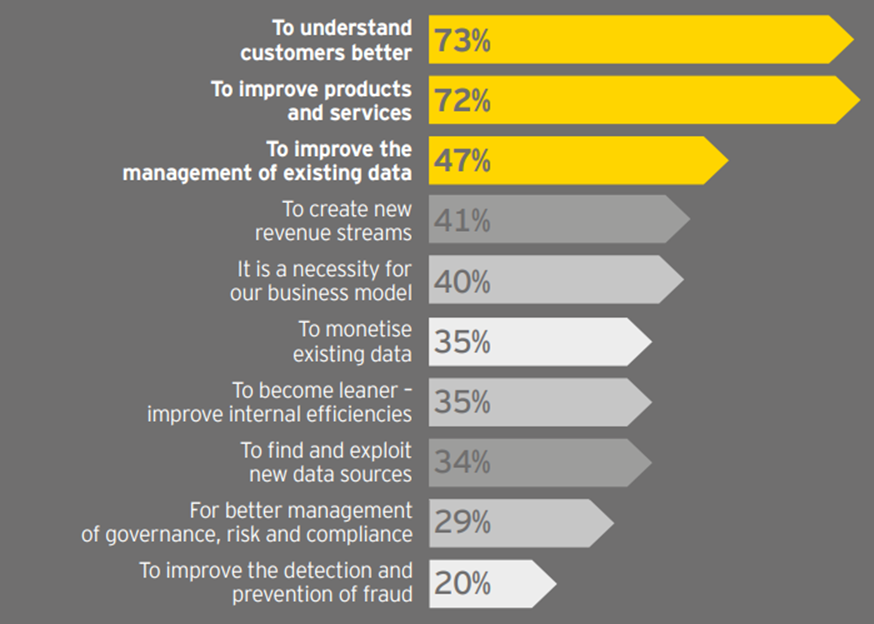What is the message?
Understanding an organization’s true worth transcends simple balance sheet analyses.
Embracing big data analytics offers a pathway to unlock hidden value, mitigate risks, and optimize decision-making processes, thus fostering sustainable growth and competitive advantage.

This is an excerpt of the publication above, focusing on the Executive Summary, and adding one example for illustration of the results, written by Herman Heyns, Chris Mazzei , in collaboration with Nimbus Ninet 2015
EXECUTIVE SUMMARY
What are the key points?
Big Data’s Value Creation: Big data analytics revolutionizes decision-making by providing comprehensive insights into market dynamics, customer preferences, and potential risks, enabling informed and strategic business actions.
Risk Mitigation and Compliance: Big data aids in safeguarding organizational value through effective risk management and compliance with evolving regulations, such as the EU General Data Privacy Regulation, ensuring data security and integrity.
Intangible Value Measurement: Analytics facilitates the identification and quantification of intangible value drivers, encompassing employee skills, customer sentiments, and product innovations, offering a holistic view of organizational worth.
Research Insights: EY and Nimbus Ninety’s research underscores the gap between organizations’ recognition of data’s importance and the maturity of their data strategies, emphasizing the untapped potential of big data analytics.
Key Challenges: Widespread underinvestment in data infrastructure, poor data quality, and the scarcity of specialized skills emerge as critical impediments hindering effective value-driven decision-making.
Bupa Case Study: Bupa’s utilization of accurate patient data showcases the transformative impact of big data analytics in healthcare, highlighting significant cost savings and improvements in patient outcomes.
What are the key statistics?
81% of organizations acknowledge the centrality of data in decision-making.
Only 3% of companies describe their data strategy as “mature.”
“Understanding customers better” and “improving products and services” rank as top drivers for big data projects.
32% of respondents feel overwhelmed by data, while 50% cite poor data quality as a key concern.
Conclusion
The journey towards becoming an analytics-driven organization entails addressing challenges, investing in robust data infrastructure, and nurturing a data-centric culture.
By harnessing big data analytics, organizations can uncover latent value, mitigate risks, and propel innovation, ultimately fostering sustainable growth and resilience in a dynamic business landscape.
The top 10 drivers for your organisation to implement big data analytics
Our latest research shows businesses are not yet realizing the true potential of big data to measure, create and protect value across diverse operational areas.












